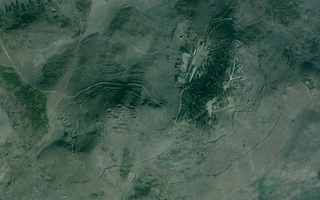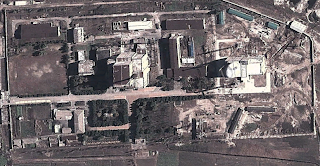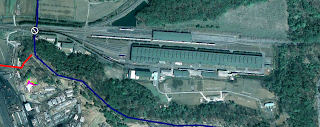The future principals are those who are ready to stand at the forefront in leading teachers and students to increase their competence in the global perspective on society. Whitehead, Boschee, and Decker (2013) asserted, “Principals who are leaders of schools in a global society are expected to increase teacher quality and effectiveness and must become proficient in their ability to become instructional leaders” (p.277). In line with this, Educational Leadership Constituent Council (ELCC)1standards number 2.2 states that school leaders need to be able to provide effective instructional programs. Therefore, principals are expected to understand their role as instructional leaders. One of the important roles as an instructional leader is supervising teachers in order to improve professional practice and student achievement. One method of supervising teachers is classroom observation. In this article, I will discuss: Class Observation as a Clinical Supervision Process, Step to Observation, Analysis of My Class Observation, and Things I Learned.
Class Observation as a Clinical Supervision Process
Whitehead, Boschee, and Decker (2013) wrote that the aim of in-class observation by principals is to improve instruction. Observation is believed to be one effective approach to improve students learning as part of their preparation for competing in the emerging global world. There are two different purposes of conducting observations; Wilkerson (n.d) wrote that observations are for evaluation and teaching improvement.
When classroom observation is used for the purposes of evaluation, judgments are usually summative and the teacher plays little, if any, role in making them. On the other hand, when observation is conducted for the purpose of teaching improvement, judgments are formative and the teacher is actively involved in the assessment of teaching quality and needed improvement. (Wilkerson, n.d)
In this paper, I reported my observations for the purpose of teacher evaluation. Therefore, I do not focus on giving judgments of teaching improvement for teacher I observed.
Step to Observation
Goldhammer (1960) in Whitehead, Boschee, and Decker (2013) classified five steps for conducting observations for the purpose of evaluation: 1. Pre-observation conference, 2. Recorded written account, 3. Supervisor’s analysis and strategy, 4. The conference, 5. Post-conference analysis. In addition, Wilkerson (n.d) divided observations into three steps: 1. The Pre-observation conference, 2. Observation, 3. Post-Observation conference. Meloche (2013) in her teaching material wrote that there five cycles of observation: 1. Picking a focus and planning the observation, 2. The planning conference, 3. The Observation, 4. Planning for and holding the reflective conference, 6. Synthesis of Learning.
Analysis of My Class Observation
Even though the three observation steps above basically have the similar cycle among others, I used Goldhammer’s five observation steps to describe what I have done in the class I observed.
1. Pre-observation Conference
I observed a Math teacher in East Lansing High School (ELH), Ms. Wati (not real name). Ms. Wati has been teaching in ELH for six years. She teaches Algebra, Calculus, and Geometry. On March 7, 2013, I observed her Algebra class for ninth graders. Before I observed her class, I made an appointment with her. We discussed the goals of my observations, our mutual expectations, and the data to be collected. We used email and text (short message service) to arrange everything prior to my observation for her class. In the email, Ms. Wati shared information about her teaching goals, her lesson plans’ goal, and her students. She also asked me to focus on the area of classroom management and student engagement.
2. Recorded Written Account
I recorded a written account of the behaviors enacted and the words spoken in the classroom by both the teacher and her students. The tool that I used to document Ms. Wati’s class was a note-taking sheet. I used a pen and some note taking sheets that I devided into two columns: teacher and students column. I write what I saw and heard from MS. Wati on the teacher column, and put what I see and heard from students in the students’ column. I used the template of note taking from Meloche’s (2013) note taking sheet. Here is the summary of my recordings:
Ms. Wati started the class by arranging the seat of the students. She wrote the name of the students on the screen board and divided them into two rows. “Please find your seat based on the names on the board, just for today.” Then, the students moved to the seat based on the seat position Ms. Wati set. After that, Ms. Wati shared the work sheet with the students and approached one student who put her feet on the table: “Put your feet down please.” The student seemed reluctant to put her feet down; therefore Ms. Wati talked to the student slowly and then the student put her feet down.
“Anyone else need calculator?” Ms. Wati asked students after one student asked her to lend the students a calculator. Two students raised their hands, but before the students got the calculator, Ms. Wati wrote the lending number on the white board. While students were doing their work individually, Ms. Wati went around the class to see whether or not the students needed her help. She also lent students a small ruler. “This is perfect… perfect….”, “Do you see the pattern…?”, “Go ahead and plug those…”, “Keep going if you haven’t done”. Those are some sentences uttered by Ms. Wati while she checked the students’ work. When the alarm was beeping, Ms. Wati started to discuss the answers of the work sheet together with the class. One student said, ”What’s wrong today?” Then Ms. Wati answered: “Yeah... it’s weird today, we are so silent, no body screaming or shouting.”
“What about number four, anyone in this side has done with number four?” Then one student raised his hand and answered question number four. After that, the teacher showed the students’ drawing (Joey’s, Justin’s, Olivia’s and Sam’s) on the screen.
The teachers asked one student a question, “What is annoying about it?” Then the students answered, “Because I don’t like it.” Then the teacher continued to do the questions together with all students in the class. When the teacher explained the questions, one student came and brought something to eat. But the teacher let the student have the meal.
There was one student who asked a question to Ms. Wati: “How do I figure out number one?” Then Ms. Wati re-explained question number one to the students.
After the bell rang, Ms. Wati did not allow all students to leave the class. The students who hadn’t finished the work had to make a line and finish their job. After that, they had to show their work to Ms. Wati, who stood in front of the door.
The Algebra class is started on 10:46 and ended at 11.34. The objective of the class I observed was that “Students will examine the structure of linear equations and explore symbolic and graphical linear representations.”
3. Supervisor’s Analysis and Strategy
In this step, I scanned the raw data to identify patterns in behavior that promoted or hindered learning for students. Something that went well during the lesson is that Ms. Wati, who had already known the students in grade 9 (who were always making noise in the classroom) managed the seat rotation. She divided the class into two rows, and she displayed the names of the students, based on their seat, on the screen before the class begun. This strategy was really effective and I witnessed the evidence when one student asked the class “what’s wrong today.” The student was wondering why that day the class did not make some noise. I also noticed that, Ms. Wati did not want to sit. She always walked around the class to see the students’ work. She also asked the students whether or not they needed her help.
However, I also noticed from my raw data that Ms. Wati did not really ask students to work together in a pair or group. When I observed her class, she asked students to do their assignments individually. I believe it would be better if Ms. Wati also considers asking her students to work in pairs or in groups.
4. The Conference
After I finished my observation, I asked Ms. Wati whether she had several minutes for me to have a small conference with her. She told me that she did not mind being asked several questions. The topic of our conference was “classroom management” which is what we had decided before I observed the class. My first question was “ What went well in your lesson?” Ms. Wati answered that students were on tasks and they did not make noise like they commonly did. The students were really enthusiastic to discuss the answers together. My second question was “How do you think the topic went?” Ms. Wati answered, “ It seems like the students have developed the patterns. They seem to have a general understanding of the structure of linear equations and they explored symbolic and graphical linear representations.”
Then I continued to ask her, “What did you do during the lesson that promoted learning?” She answered, “I picked variety of the students, I drew the students’ graphical linear and showed them in front of the class as the model of the correct answers. I didn’t asked the students to voluntarily answer the questions, because I expected everyone to do everything, without depending on others.”
My fourth question was, “What did you notice about your students?” Ms. Wati answered that today she noticed her students were really quiet. Then I continued to asked her, “Besides, your classroom management that you applied today, is there any other reasons why your students were so quiet today?” Ms. Wati answered, “I think because we missed some students today, some of them just finished their tests and perhaps they were just exhausted.”
My fifth question was, “How do you think about your lesson? Is there anything you would change?” Ms. Wati then answered, “I am planning to change my class into being more student centered. I will apply a pair sharing activity or group work activities. However, the biggest challenge is that teaching math, algebra and calculus was just different.
My last question was “How do you feel about the debriefing?” Ms. Wati responded: “Debriefing helps me to think back. Debriefing is my crucial think.” I closed my conversation by thanking her for having me in her class for observation. I also congratulated her for her success with her classroom management.
5. Post Conference Analysis
I made some notes to evaluate my own supervisory activity: (a) It is important to discuss with the teacher before we start doing observations. (b) In the pre-observation phase, the supervisor/observer needs to ask the teacher what specific things the teacher needs to evaluate. (c) The supervisor needs to consider several kinds of questions, such as miracle questions, scaling questions, expectation seeking questions, and coping questions to help teachers answers our questions. (d) The supervisor needs to prepare some equipment e.g., notes, conversation transcripts, audio tape, etc. However, the supervisor also needs to ask whether or not they can use the equipment in the classroom. (e) The supervisor needs to write what they saw and heard as well as the judgmental comments. However, the principals need to keep the judgmental comments separate.
Things I learned
Since this is my first time I did my supervisory observation, I have some notes, which are really valuable for use upon completion of this study.
1. As a future school principal, I need to be aware of my instructional leadership role. One important thing that I need to promote in my school in Indonesia is doing supervisory observation. I have been teaching for five years, in three different schools. I found that my three schools have never had observations in the classroom. Therefore, promoting classroom observation as supervisory activity will be valuable to increase students’ achievement.
2. In doing observation, I need to focus on the steps of doing it. We can decide which steps of observation we are going to use. In this observation, I used Goldhammer’s steps of observation: 1. Pre-observation conference, 2. Recorded written account, 3. Supervisor’s analysis and strategy, 4. The conference, 5. Post-conference analysis.
3. In doing the conference, instead of giving judgmental points to the teacher, it is better to discuss with the teacher what was going well and what was not.
In conclusion, there are some approaches that school principals can enact for the improvement of the instruction. One of the effective approaches is in-class observation. Class observation can help teachers better understand their role as a pioneer in preparing students to compete in the emerging global world. Besides, by doing observation the teachers will not feel that they are alone. The conference step in the observation process is really valuable to help teachers, and even the principal, to increase their efficacy in the instructional process.
------
1 ELCC is Education Leadership Constituent Council. ELCC becomes the standards of principal in implementing their programs. ELCC standards can be read in “The Principal Leadership for Global Society” by Whitehead, Boschee and Decker (2013).
Reference:
Meloche, B. (2013) The observation Cycle. MSU: Unpublished (teaching materials).
Whitehead, B., Bjoschee, F., Decker, R., (2013). The principal: Leadership for a global society; Los Angeles CA., Sage.
Dion Efrijum Ginanto
Graduate Student K12 Educational Administration
Masters in Michigan State University
1550 Spartan Village Apt.G, East Lansing
Michigan, 48823
+1-313-728-8069












































